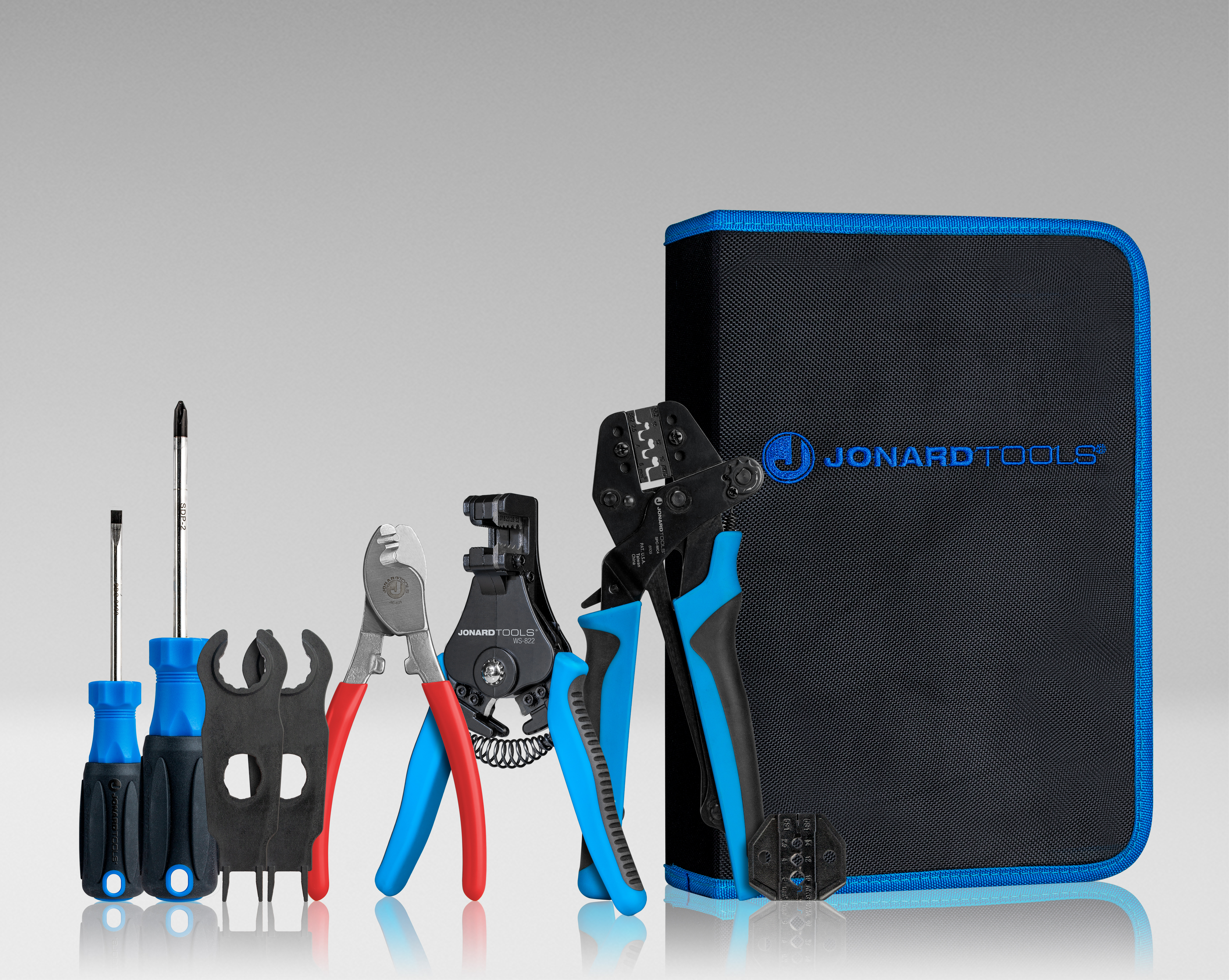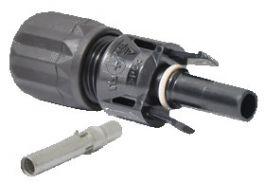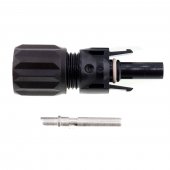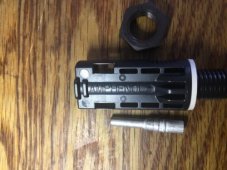You are using an out of date browser. It may not display this or other websites correctly.
You should upgrade or use an alternative browser.
You should upgrade or use an alternative browser.
Dc mini breaker confusion
- Thread starter Mannfamilywoodworks
- Start date
Mannfamilywoodworks
Solar Enthusiast
Yeah just spit on it first to make it extra stickyCan you use that stuff instead of mortar when making concrete block walls?
Mannfamilywoodworks
Solar Enthusiast
HahahahahahaMore like extra stinky
littleharbor2
Solar Addict
If you can still find a MC-3 crimper kit, there is a special expander for inserting the contact into the boot. Chances are, if you do find one it'll be too expensive to be worth it. Simply cut off any MC-3 connectors and crimp on MC-4's instead.I did install some MC3 on ends of PV panel wires that had been cut. It would help to have correct size contact for the wire gauge, and correct size boot for the insulation. I used wire lube but it was still tough. Someone told me soften them in hot water, will try that next time.
Hedges
I See Electromagnetic Fields!
- Joined
- Mar 28, 2020
- Messages
- 20,711
I was installing the panels to replace bad ones in an existing array. Sure, could make a transition and continue in MC4. But I've got over 100 panels (of two brands) with MC3 in a number of arrays. MC4 for another brand.
I like MC3 better, seems higher quality than rolled sheetmetal contacts.
I haven't found the boot stretcher for sale, but found a forum talking about it and a link to one in use:
I find many strip & crimp kits but no boot expanders. Didn't know they existed. Thanks for the tip!

 jonard.com
jonard.com
I like MC3 better, seems higher quality than rolled sheetmetal contacts.
I haven't found the boot stretcher for sale, but found a forum talking about it and a link to one in use:
I find many strip & crimp kits but no boot expanders. Didn't know they existed. Thanks for the tip!

Solar Panel MC3 & MC4 Crimping Tool Kits
Discontinued - Superseded by SPK-100 The Jonard Tools SPK-90 Solar Panel Crimping Tool Kit is designed to facilitate the installation and maintenance of solar panels. It includes a variety tools to make installing and maintaining solar panels quick and easy. This crimping tool kit includes the...
Another BougeRV pigtails user - buy a PV extension cable and cut it in half. My cheapo solar panels came with regular hookup wire and SAE connectors, which got replaced with proper MC4 connectors.
Their stuff is pretty good for china imports, they appear to do a lot of product testing to ensure reliability. I got one of their 12V coolers and it's just fantastic - keeps the beer at 35* and sips power.
On 5200 - I bought a boat some years back that had a kicker motor bracket mounted from the factory, and didn't want it cuz I don't utilize a kicker motor, I don't troll my sport fisher. The dealer agreed to remove it and take the $650 cost of the bracket off the price of the boat before delivery. Since it was an 800 mile trip to deliver it, and I was to meet them halfway, they brought it with the bracket still mounted - they couldn't get it off. It was thru-bolted through the transom and sealed on with 5200. I said no problem, I'll remove it and send it back to them. They said no, no need, we'll just take the price off the final invoice.
Once I got the boat home since I really didn't want that thing on there, and I've been working on boats my entire life, I tackled the removal in my shop. Oh dear, the only way to get 5200 to let go is to cut it. I tried everything in my arsenal of tools to get it off and finally did. But it took a sheet of gelcoat with it. On a brand new boat. I was mortified! So there I was with quite a substantial defect on the transom of a brand new outboard boat.
I ordered gelcoat patch compound from Spectrum - they match colors perfectly - and sprayable gelcoat, and properly repaired it. You can't tell, and the blind nuts are still there so conceivably the next owner that DOES want a kicker bracket could dig out the mounting holes and bolt another one on there. But oh my, that was a lesson in the tenacity of 3M adhesive-sealant. And that stuff takes days to cure - once it does it's not going anywhere.
Their stuff is pretty good for china imports, they appear to do a lot of product testing to ensure reliability. I got one of their 12V coolers and it's just fantastic - keeps the beer at 35* and sips power.
On 5200 - I bought a boat some years back that had a kicker motor bracket mounted from the factory, and didn't want it cuz I don't utilize a kicker motor, I don't troll my sport fisher. The dealer agreed to remove it and take the $650 cost of the bracket off the price of the boat before delivery. Since it was an 800 mile trip to deliver it, and I was to meet them halfway, they brought it with the bracket still mounted - they couldn't get it off. It was thru-bolted through the transom and sealed on with 5200. I said no problem, I'll remove it and send it back to them. They said no, no need, we'll just take the price off the final invoice.
Once I got the boat home since I really didn't want that thing on there, and I've been working on boats my entire life, I tackled the removal in my shop. Oh dear, the only way to get 5200 to let go is to cut it. I tried everything in my arsenal of tools to get it off and finally did. But it took a sheet of gelcoat with it. On a brand new boat. I was mortified! So there I was with quite a substantial defect on the transom of a brand new outboard boat.
I ordered gelcoat patch compound from Spectrum - they match colors perfectly - and sprayable gelcoat, and properly repaired it. You can't tell, and the blind nuts are still there so conceivably the next owner that DOES want a kicker bracket could dig out the mounting holes and bolt another one on there. But oh my, that was a lesson in the tenacity of 3M adhesive-sealant. And that stuff takes days to cure - once it does it's not going anywhere.
littleharbor2
Solar Addict
Here it isI was installing the panels to replace bad ones in an existing array. Sure, could make a transition and continue in MC4. But I've got over 100 panels (of two brands) with MC3 in a number of arrays. MC4 for another brand.
I like MC3 better, seems higher quality than rolled sheetmetal contacts.
I haven't found the boot stretcher for sale, but found a forum talking about it and a link to one in use:
I find many strip & crimp kits but no boot expanders. Didn't know they existed. Thanks for the tip!

Solar Panel MC3 & MC4 Crimping Tool Kits
Discontinued - Superseded by SPK-100 The Jonard Tools SPK-90 Solar Panel Crimping Tool Kit is designed to facilitate the installation and maintenance of solar panels. It includes a variety tools to make installing and maintaining solar panels quick and easy. This crimping tool kit includes the...jonard.com
Rennsteig Assembly Tool for MC 3 connectors
P/N 725 000 For assembling MC3 cable couplers PV-KBT3... and PV-KST3... for cross sections 2.5 / 4 / 6 / 10 mm² (AWG 14/12/10/8) Tool includes: Integral wi...
littleharbor2
Solar Addict
Hedges
I See Electromagnetic Fields!
- Joined
- Mar 28, 2020
- Messages
- 20,711
Amphenol H4

 www.amphenol-industrial.com
www.amphenol-industrial.com

 www.solar-electric.com
www.solar-electric.com

H4 PV Connector
The H4 PV Connector is the premiere solar connector in the market today. Carries more amps than the industry standard connector. Meets the NEC 2008/2011 standard “as is” no additional locking-clip required.

Amphenol Female H4 Connector Contact With Housing
Amphenol Female H4 Connector Housing and Contact
12VoltInstalls
life passes by too quickly to not live in freedom
That’s a great product for sure. Cyanuratic and superior to regular urethane caulking.that was a lesson in the tenacity of 3M adhesive-sealant.
But I use construction-grade polyurethane caulking 98% of the time because I can use it liberally and still afford it. ?
Vigo
Solar Addict
I find many strip & crimp kits but no boot expanders. Didn't know they existed. Thanks for the tip!
I've never seen or done an Mc3 but i frequently have to 'temporarily stretch' things for install in my little projects. One thing i bought recently is a 'tubing swager' as seen below:

Although the reason i actually bought one was as a way to 'stretch' or oval out chain links in my shop press whenever i want to stick a pin or bolt through a chain and it doesn't fit, i push this thing into the chain link to oval it out so i can run the bolt through. But it might work for your use.
So, when are blocking diodes called for in a solar build?"Reverse polarity protection"
If you hook 200V reverse polarity to inverter, it drives electrolytic capacitors backwards and they blow up. Maybe other things too.
A blocking diode could have held off the voltage, but would have voltage drop in normal operation, causing power loss.
A backwards diode across +/- shorts them out to about 1V or so under reverse polarity. That prevents damage.
This is one reason why there is a maximum Isc spec on MPPT inputs.
In the past, some brands of inverters didn't have the diode, and suffered near 50% failure during install.
This works well for PV, limited current. Not good for battery or AC powered DC supplies. Those may used back-to-back FETs. More expensive and limited voltage range. Typically also used to implement inrush limiting.
Hedges
I See Electromagnetic Fields!
- Joined
- Mar 28, 2020
- Messages
- 20,711
I'm not sure blocking diodes are ever needed.
Only if there would be excessive backfeed, which multiple parallel PV strings usually would not do.
In the case of a short circuit, fuse/breaker is supposed to protect (but polarized breakers might fail to do so). Diode, if it didn't fail, would prevent backfeed. I wouldn't consider a diode reliable enough for fire protection.
You can get "ideal diode" which is a MOSFET with drive circuit to avoid the 1 ~ 2V drop through a power diode.
Only if there would be excessive backfeed, which multiple parallel PV strings usually would not do.
In the case of a short circuit, fuse/breaker is supposed to protect (but polarized breakers might fail to do so). Diode, if it didn't fail, would prevent backfeed. I wouldn't consider a diode reliable enough for fire protection.
You can get "ideal diode" which is a MOSFET with drive circuit to avoid the 1 ~ 2V drop through a power diode.
Wonder if these 20A MC4 with the diode would protect solar panel wires, like 12 awg, with lower ampacity from over-current from combined short circuit current that is too high due to parallel configuration, for example, three large solar panels in parallel. Here is some for sale:I'm not sure blocking diodes are ever needed.
Only if there would be excessive backfeed, which multiple parallel PV strings usually would not do.
In the case of a short circuit, fuse/breaker is supposed to protect (but polarized breakers might fail to do so). Diode, if it didn't fail, would prevent backfeed. I wouldn't consider a diode reliable enough for fire protection.
You can get "ideal diode" which is a MOSFET with drive circuit to avoid the 1 ~ 2V drop through a power diode.
Solar Diode Connector——The 20A Connectors
Connectors are used for parallel connection between solar panels, so will maintain the voltage of your panel configuration to match your Solar On/Off -Grid System.
Function: The rectifier circuit only allows the current to pass in a single direction, and blocks it in the reverse direction to prevent the backflow from burning the photovoltaic panel.
If you get time could you check post #83 here: https://diysolarforum.com/threads/b...cks-with-two-8s-bmss.50986/page-5#post-651585. Is this a solution to an over-current problem affecting my solar panel wires?I'm not sure blocking diodes are ever needed.
Only if there would be excessive backfeed, which multiple parallel PV strings usually would not do.
In the case of a short circuit, fuse/breaker is supposed to protect (but polarized breakers might fail to do so). Diode, if it didn't fail, would prevent backfeed. I wouldn't consider a diode reliable enough for fire protection.
You can get "ideal diode" which is a MOSFET with drive circuit to avoid the 1 ~ 2V drop through a power diode.
Hedges
I See Electromagnetic Fields!
- Joined
- Mar 28, 2020
- Messages
- 20,711
20A Fuse per string protects the wires from 37A. (except for short run from combiner box to fuse)
Diodes should protect wires from backfeed, but are not a UL listed part, could fail shorted in which case wires are unprotected.
Diodes should protect wires from backfeed, but are not a UL listed part, could fail shorted in which case wires are unprotected.
So, the object is to protect that short run from the MC4 20A fuses to the combiner box and maybe add an MC4 blocking diode to the positive wires, or some kind of back feed protection. A second charge controller may be an option too.20A Fuse per string protects the wires from 37A. (except for short run from combiner box to fuse)
Diodes should protect wires from backfeed, but are not a UL listed part, could fail shorted in which case wires are unprotected.
Similar threads
- Replies
- 7
- Views
- 441
- Replies
- 21
- Views
- 1K
- Replies
- 20
- Views
- 798
- Replies
- 8
- Views
- 404
- Replies
- 6
- Views
- 388




